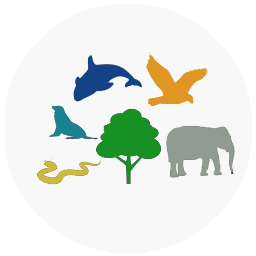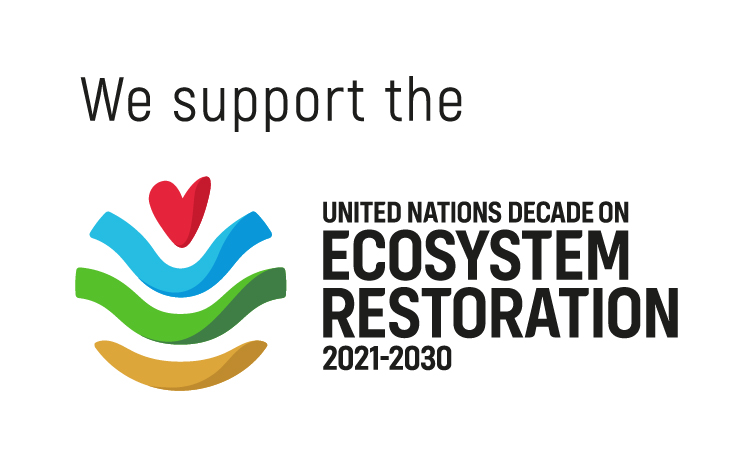Trees for Communities
Moga, Punjab, India
Available for Adoption upto: 15,000 Trees
Project Purpose
Trees for Rural Communities™Location

In FY 2024-25, the tree plantation of 25,000 trees will be carried out in the villages of Ghal Kalan, Daroli Bhai, Dagru, Saffuwala, Sosan, Mahesari, Kahan Singh Wala, Daulatpura Niwan in Moga district, Punjab, India.
Previously, we have planted 65,000 trees in Ghal Kalan, Dhalle Ke, Khosa Pando, Ratiyan, Manawan, Khosa Jalal Singh Wala, Khosa Kotla, Ghaloti, Daroli Bhai, Kot Ise Khan, Dhune ke, and Rajeaana villages situated in Moga district, Punjab, India.

Enhancement of
Biodiversity

Groundwater
Recharge

Increase in
Green Cover

Generation of
Rural Employment





Why Trees?
Punjab, like many other areas, is grappling with environmental pollution caused by various anthropogenic activities such as burning fossil fuels, stubble burning, excessive chemical fertiliser use, and industrial waste.[1] These activities contribute to air pollution, which has been linked to health issues like an increase in cancer rates and diseases of the reproductive system.[2] Planting trees in Moga, Punjab can significantly help mitigate the environmental challenges faced by the people in the region. It will help mitigate the impact of air pollution as trees play a crucial role in improving air quality.[3]
Groundwater contamination also poses grave health risks in Punjab. Tree planting can aid in groundwater recharge and purification, contributing to improved water quality and human health.[4] Additionally, urban tree planting can help mitigate greenhouse gas emissions and air pollution, providing multiple environmental and human health benefits.[5]
Planting trees can help mitigate the challenges faced by wildlife in Moga, Punjab. “Trees provide habitats for wildlife, offering shelter and food sources, which can help offset habitat disturbances caused by human activities”.[6] By creating green spaces with trees, the impact of urbanisation and industrialisation on wildlife can be reduced, providing essential resources for various species. In Punjab, planting indigenous can promote avian diversity, highlighting the importance of selecting appropriate tree species for conservation efforts.[7] By selecting appropriate tree species, implementing sustainable planting practices, and integrating local knowledge, Punjab can effectively enhance its forest cover and contribute to environmental conservation efforts.
Tree Species
The tree species selected for this tree plantation project are native to the area and hold not only ecological but also economic value.
Indian trees have long provided people with medicinal benefits and high-quality wood. The project involved the plantation of Neem (Azardirachta indica), which is known for its excellent wood, and is also renowned for its medicinal benefits. Sohajna (Moringa oleifera), known for its nutritional benefits and medicinal properties. Pipal species (Ficus religiosa) are ecologically beneficial as they provide shade, reduce air pollution, and support biodiversity. Similarly, Shisham wood (Dalbergia sissoo), with its innate resistance to decay and warping, is popularly used for woodcarving and making kitchenware products. It provides excellent resistance to dry-wood termites and is known for its durability. Jamun (Syzygium cumini) is a nutritious fruit with several health benefits and is rich in antioxidants. Plus, its leaves and bark have medicinal properties that are used in traditional medicine. Finally, Burma Dek (Tectona grandis), a tree with great wood, is highly valued for its durability and aesthetic appeal. It is also known for its resistance to decay and pests, making it a long-lasting and sustainable option.
Social Impact
The tree plantation in Moga region will contribute to the expansion of forest cover. Trees will help to enhance air quality and the environment as a whole. They will assist to compensate for the greenhouse effect by sequestering atmospheric carbon dioxide after they reach maturity by functioning as carbon sinks. Trees will aid in the removal of particulate matter from the atmosphere, particularly small particles that cause substantial health risks due to air pollution. These trees are intended to aid in the replenishment of groundwater by minimising topsoil erosion, reducing the force of storms, and reducing down water flow. These trees are aimed to prove beneficial in reducing topsoil erosion, decreasing the force of storms and down water runoff which in turn will help to replenish the groundwater.
Trees play a vital role in providing habitats for wildlife, offering them shelter and reliable sources of food. This is crucial in offsetting the habitat disturbances caused by human activities. By creating green spaces adorned with trees, we can reduce the adverse impact of urbanization and industrialization on wildlife, ensuring that they have access to essential resources they need to thrive. A crucial aspect of the project is planting trees which not only holds ecological significance but also reaps health benefits. The green cover will have a positive impact on the region’s air quality and overall carbon balance. Both the community and wildlife will benefit from improved air quality and carbon sequestration.
Adoption Summary
|
Name of the Company |
Number of Trees Planted |
Fiscal Year |
|
Arpwood Capital Pvt Ltd |
15,000 |
2021-22 |
|
HDFC Bank Ltd |
25,000 |
2020-21 |
|
DCB Bank |
15,000 |
2019-20 |
[1] Kaur, H. and Singh, M. (2022). An assessment of environmental pollution and policy initiatives in punjab, india: a review. Environment and Ecology Research, 10(4), 427-436.
[2] Thakur, J., Kaur, H., & Thakur, C. (2022). Power of millets- critical for addressing ecological, agrarian, and emerging health crisis in punjab. Indian Journal of Community Health, 34(4), 565-568.
[3] Isaifan, R. and Baldauf, R. (2020). Estimating economic and environmental benefits of urban trees in desert regions. Frontiers in Ecology and Evolution, 8.
[4] Hassan, G., Shabir, G., Akhtar, S., Rafique, H., & Khan, M. (2022). Groundwater and nutritional health challenges- a case study from indus river system in pakistan. Journal of Nutritional Health & Food Engineering, 12(2), 61-64.
[5] Pataki, D., Alberti, M., Cadenasso, M., Felson, A., McDonnell, M., Pincetl, S., … & Whitlow, T. (2021). The benefits and limits of urban tree planting for environmental and human health. Frontiers in Ecology and Evolution, 9.
[6] Ruseva, T. and Fischer, B. (2015). Can incentives make a difference? assessing the effects of policy tools for encouraging tree-planting on private lands. Journal of Environmental Management, 155, 162-170.
[7] Kumar, S. and Kler, T. (2021). Avian diversity at beas river conservation reserve under urbanization and intensive agriculture in punjab, india., 167-192.









